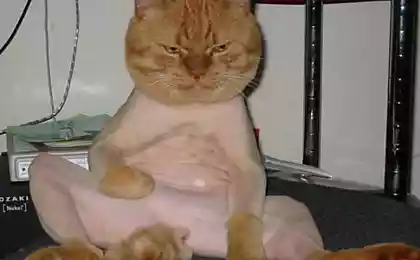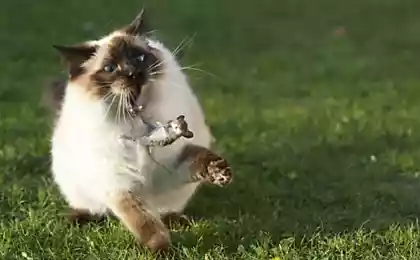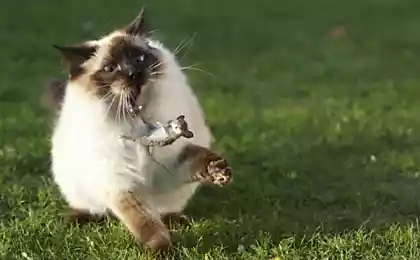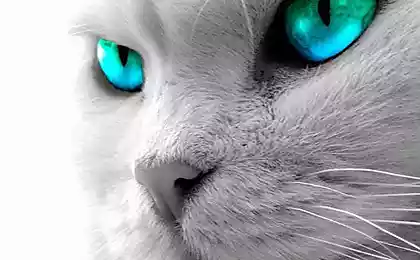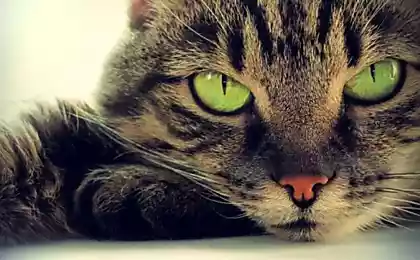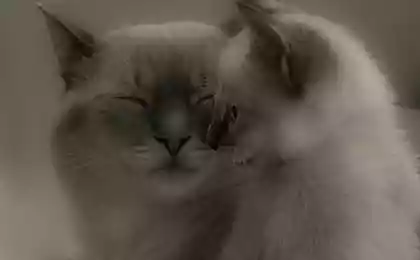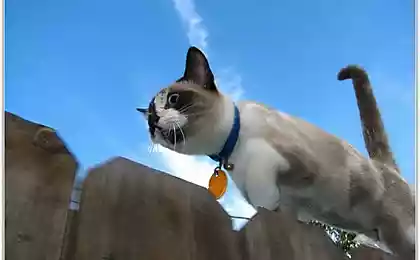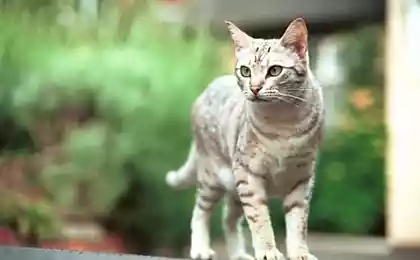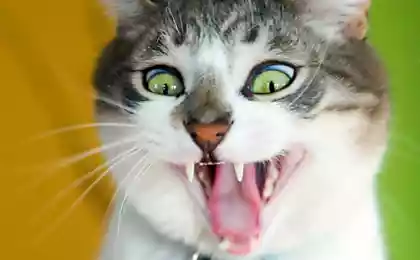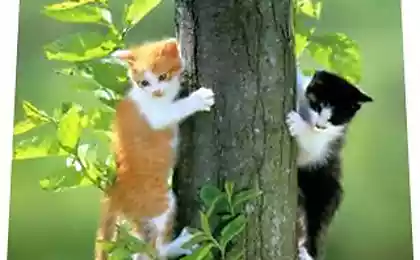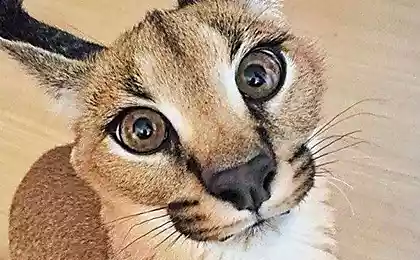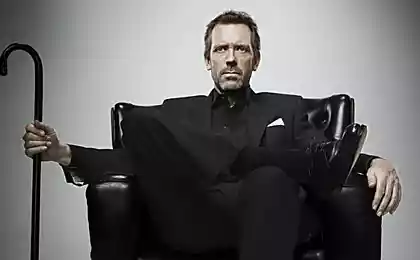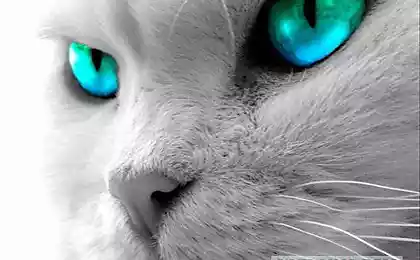566
The cute features of your cat from a scientific point of view
If you love cats, you probably know exactly what every part your little friend is just amazing, from the fluffy legs and to the tiny pink nose. But views were pricked pointy ears and a funny mustache, it should be remembered that all these parts of the cat's body serve a particular purpose that at first glance may go unnoticed.
Let's closely acquainted with cute cat paws, noses and tongues with the aid of macro photography and learn more about our furry (and someone and hairless) friends.
Ears the Ears cats have 32 muscles that allow you to rotate them 180 degrees to determine the exact source of the sound. Although his hearing famous dogs actually cats can hear better because they can distinguish between higher sounds and can identify the smallest variations in tone. But even with excellent hearing, the cat may just ignore your call.
The vestibular apparatus in the inner ear of cats provides balancing and orientation on the terrain, but because the animal always knows where the top and bottom where. Due to this biological mechanism cats almost always land on their feet.
Eyes Cats can see in light intensity only 15% of what we need, because their eyes contain more sticks compared to the eyes of man. These cells allow the animal to perceive more light. In addition, in the cat's eyes have a tissue called "tapetum lucidum". Layer reflects light within the eye, making them glow in the dark.
In the eyes of the cat vertical pupils, and this they quickly change shape than round like ours. In addition, the pupils small, and resulted in them gets less light, resulting in cats are less susceptible to temporary blindness when a sudden change of illumination.
The nose In the nasal cavities of the cat has 200 million olfactory receptors, and they use an incredible sense of smell for finding prey. However, taste receptors are much smaller than humans, but because the food attracts them by smell rather than taste. That's because cats are suffering from respiratory diseases often lose their appetite.
The nose cat is as unique as a human fingerprint. It has a unique pattern of bumps, and you will never find two kittens with the same noses.
Mustache Mustache is a long and hard receptors of touch, known as vibrissae. They are deeply immersed in the body of a cat and send information about surrounding objects in the sensory nerves, which allows the cat to distinguish the slightest changes. Whiskers are responsible for the perception of vibration in the air, and they help the animals to determine whether they are placed in a narrow space.
In addition to whiskers on both sides of the nose and cats have short whiskers above the eyes, on the chin and on the inside of the front paws.
Mustache like the tail and ears, you can determine the mood of the animal. Relaxed they stick out at the sides, and this means that the cat is calm. In a state of excitement or apprehension whiskers pointing forward, as if they were pressed to the muzzle, then the animal is afraid or is in a state of aggression.
Language When a cat licks your skin, the feeling of sand paper caused by the papillae on her tongue. They look like tiny needles made of keratin, and their main function is to help the animal to eat and to tidy their hair. Thanks to these needles the cats can pick up small pieces of food and to lick meat from the bones.
While drinking cats with their language represent a delicate balance between gravity and inertia. The language only slightly touches the surface of the liquid and the special movement creates an upward flow of water. Animal manages to close his mouth before the force of gravity will cause the water to fall back into the bowl. Cats drink at a speed four times per second and is too fast for the human eye.
Feet Though the pads on a cat's paws are strong enough to provide protection on uneven terrain, they retain high sensitivity, allowing the animal to detect the temperature and texture of the surface. In addition, they have sweat glands to help regulate body temperature.
In addition, between the pads on the paws of cats, there are other, sebaceous glands, producing a secret, which can only distinguish cat. Scratching the surface of the objects, they are placed in the cavity formed small amounts of this secret.
The pigment that provides the color of the coat and skin of cats, also gives the color and the pads on their paws. They often have the same color as the animal itself.
Source: facepla.net

